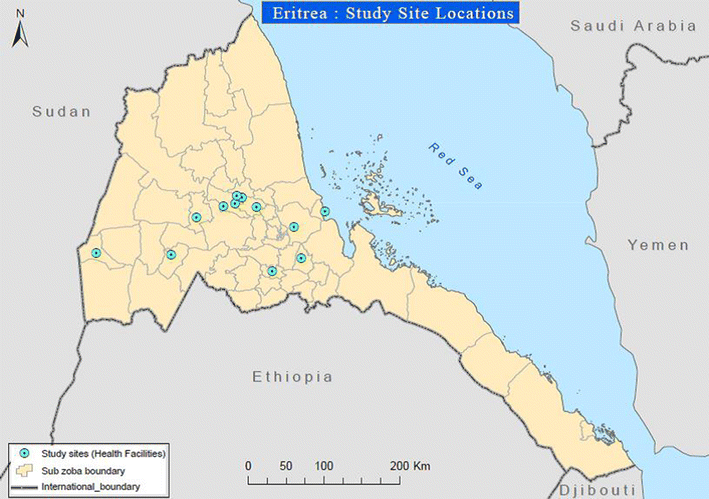Rapid diagnostic tests failing to detect Plasmodium falciparum infections in Eritrea: an investigation of reported false negative RDT results
- PMID: 28264689
- PMCID: PMC5339986
- DOI: 10.1186/s12936-017-1752-9
Rapid diagnostic tests failing to detect Plasmodium falciparum infections in Eritrea: an investigation of reported false negative RDT results
Abstract
Background: Relatively large number of false-negative malaria rapid diagnostic test (RDT) results for microscopically confirmed Plasmodium falciparum cases were reported from five of the six administrative regions of Eritrea in 2015. This activated the Ministry of Health to conduct an initial exploratory investigation. The main objective of the investigation was to confirm the sensitivity of the RDTs in the field in microscopically confirmed malaria cases, identify the possible causes of the failure and recommend further actions to be taken.
Methods: A team composed of the National Malaria Control Programme, National Medicines and Food Administration and Laboratory Unit of the Ministry of Health was established to confirm the sensitivity of the SD Bioline® RDTs. A 'Malaria RDT quality monitoring form' was prepared and distributed to 13 health facilities selected on availability of microscopy services, experienced laboratory personnel and malaria endemicity, to carry out preliminary investigation on the suspected RDT quality defect. In parallel, field visits to central and regional medical warehouses as well as selected health facilities were conducted to assess the storage conditions, handling and operator procedures. Furthermore, joint field assessment was conducted with the manufacturer, SD Bioline RDTs. During the time frame of 15 July 2015 to 19 January 2016, 65 microscopically confirmed patients were tested with Malaria RDTs SD Bioline Pf/Pv/Mixed Combo cassettes.
Results: A total of 65 blood specimens (50 P. falciparum, 13 Plasmodium vivax and 2 mixed) confirmed microscopically were tested against the available lots of malaria RDTs. Out of the 50 P. falciparum infected blood specimens, only 10 were confirmed positive with all the lots of PfHRP-2 detecting RDTs making the false negativity rate at 80% [41/51]. The false negative result for RDT targeting PfHRP2 antigen ranged from 65% [11/17] in Gash Barka region to 100% [12/12] in Northern Red Sea Region. In addition, supervisory visits undertaken by the study team have ruled out storage, handling and operator errors as causes of false negative results as the above parameter were found to be up to standards.
Conclusion: The investigation confirmed high false-negativity rate in PfHRP-2 detecting RDTs and has ruled out quality of RDTs, storage, handling and operator error as causes of the reported problem. Therefore, molecular characterization of the P. falciparum is highly recommended to explore if parasite characteristics can be considered as causes of false negative results.
Figures
References
-
- Sintasath DM, Gebremeskel T, Lynch M, Kleinau E, Bretas G, Shililu J, et al. Malaria prevalence and associated risk factors in Eritrea. Am J Trop Med Hyg. 2005;72:682–687. - PubMed
-
- Barat LM. Four malaria success stories: how malaria burden was successfully reduced in Brazil, Eritrea, Vietnam and India. Am J Trop Med Hyg. 2006;74:12–16. - PubMed
-
- WHO . Guidelines for the treatment of Malaria. 12. Geneva: World Health Organization; 2012.
MeSH terms
LinkOut - more resources
Full Text Sources
Other Literature Sources



